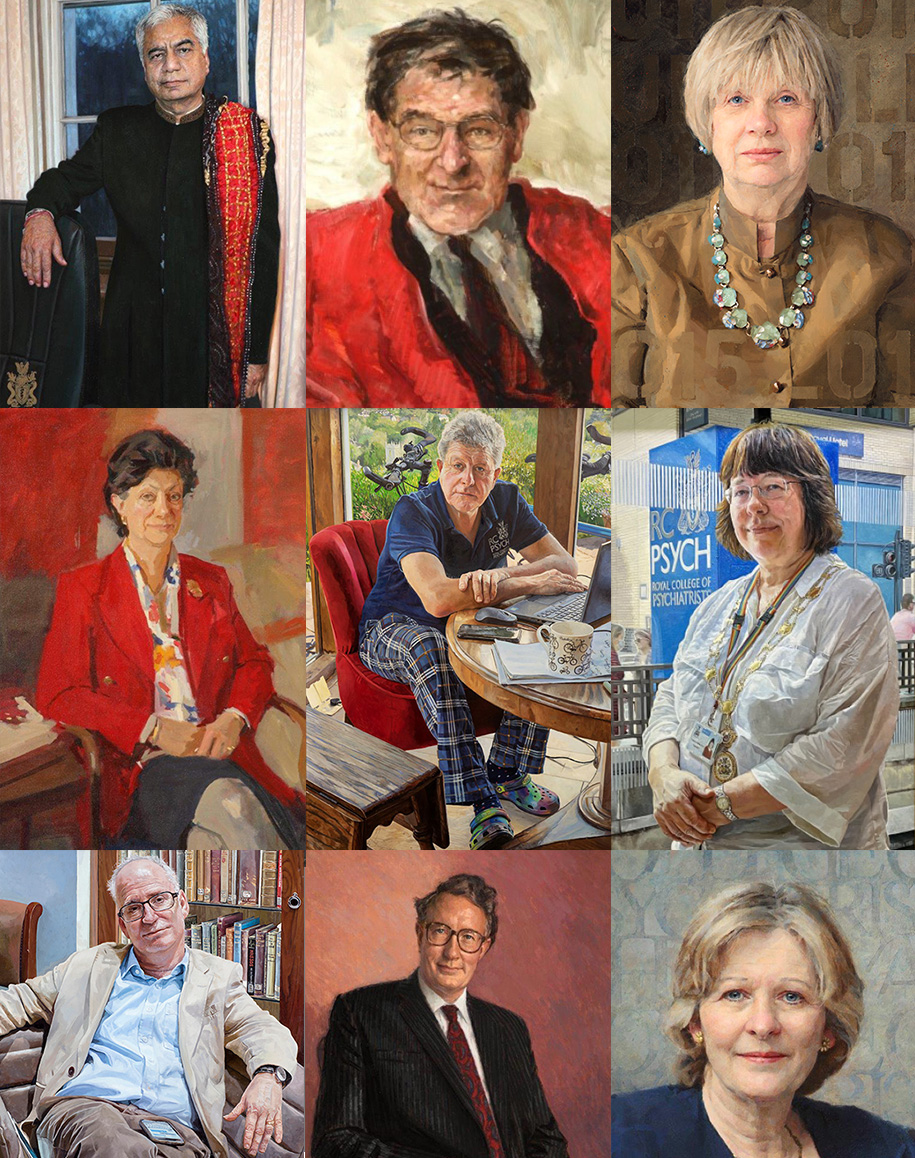Portraits of past presidents
On this page you can find out more about our project to shine a light on the College's portraits.
Like many other medical Royal Colleges, the RCPsych displays portraits of past presidents; a mark of esteem of their leadership of their professional organisation.
Presidents’ portraits at the RCPsych go back to the 1970s, after the College was established. Portraits of presidents of the College’s predecessor bodies, between 1841 and 1971, can be found in other collections, for example, the Royal College of Physicians, the National Portrait Gallery, and the National Portrait Gallery of Scotland.
A painted portrait aims to bring an understanding of the person, a visual story expressed through the artists skills, an interpretation of that person over the course of the sittings. It is collaborative, but it is the artist’s work. It is art, likeness, story and history all together. Portraits are carefully thought through and posed works of art which follow conventions and require a degree of understanding, as any other form of art.
We set about our project to try to better understand the RCPsych presidents’ portraits, and to share insights into the paintings, the creative process, and the dynamic between artist and sitter, by interviewing the College's past presidents, and the artists they commissioned to paint their portraits.
Acknowledgements
We would like to thank everyone who participated in this project, especially the sitters and artists who gave up their time with such enthusiasm to share their recollections and reflections on the paintings.
Particular thanks to the project team: Claire Hilton and Catriona Grant (project leads), Thana Balamurali, Wendy Burn, Peter Carpenter, Oliver Evelyn-Rahr, Francis Maunze, Immanuel Rhema and Tom Stephenson.
We are also grateful to other members of the College staff team who provided invaluable guidance and expertise for this project: Gemma Mulreany, Mark Turner and Keith Bradnam.
Lastly, thank you to Andrea Easey, Interpretation Editor at the National Portrait Gallery, who provided helpful advice and encouragement at the start of the project.


